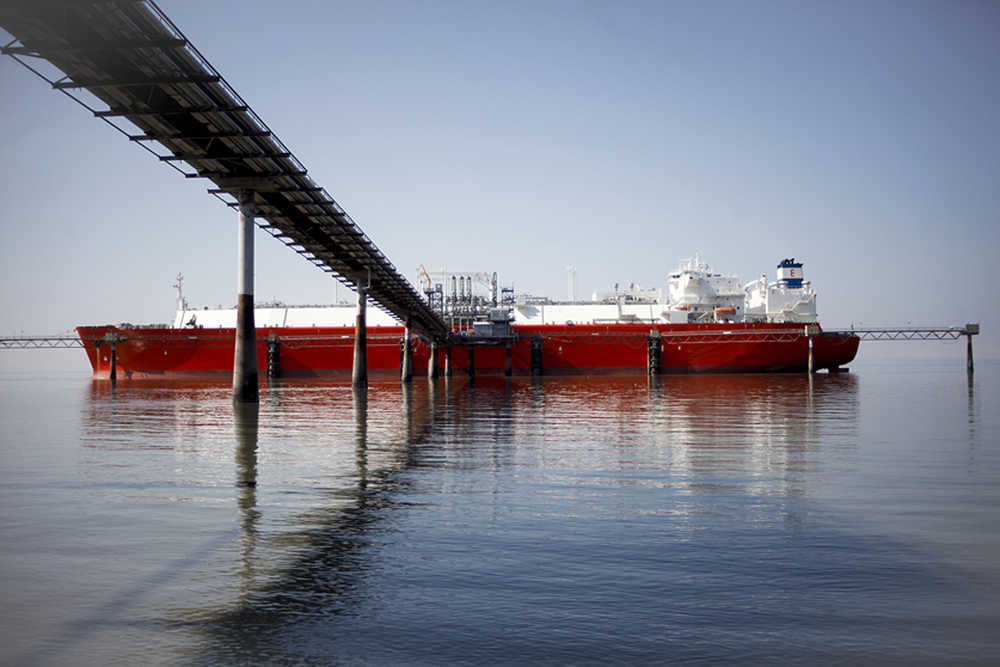The turnaround in Cook Inlet oil and gas production in recent years is one of the big success stories for Alaska. It has come at a hefty expense, however, to the state treasury.
It turns out that Inlet producers are being heavily subsidized by the state of Alaska, consultants to the state Legislature say in a report.
Since the state budget is 90 percent dependent on North Slope oil production revenues, this also means that, in effect, the big producing companies on the Slope are paying for the Cook Inlet producers.
What matters most to Alaskans is that the Cook Inlet turnaround, no matter who pays for it, has increased natural gas production in Southcentral Alaska, easing a worry that gas supplies might run short and that utilities might have to import liquefied natural gas, at great expense.
Still, the matter of who pays the bill is important with the plunge in oil prices and huge year-to-year state deficits looming.
The Legislature’s oil and gas consultants, Janak Mayer and Nikos Tsafos, said the development incentive tax credits paid to Cook Inlet producers in fiscal year 2015, the state’s current budget year, constitute about half of the state’s cash outlays to companies under the credit program, or about $300 million.
Mayer and Tsafos spoke to the Senate Finance Committee in Juneau on Jan. 27.
Statewide, the total cash outlay for the credits are $625 million, according toDepartment of Revenue data, which actually exceeds state petroleum tax income by $101.4 million, according to the Revenue Department figures Mayer and Tsafos presented to legislators.
The state’s total cash outlay for the tax credits are estimated at $625 million this year.
“Since the state does not levy a profit-based production tax in Cook Inlet, these (tax credits) essentially constitute a subsidy to Cook Inlet producers rather than an investment in future tax revenue (and production),” Mayer and Tsafos said in a paper prepared for the Legislature.
The state’s net profits production tax applies only to the North Slope fields. Cook Inlet fields are under a very minimal production tax. However, because Cook Inlet companies can take the same advantage of the state tax credit cash payments as do North Slope explorers, the result is a subsidy — more paid to the companies compared with production tax revenue paid.
Cook Inlet companies do pay state royalty, although with some Inlet fields this is reduced, and state corporate income tax in some cases.
The state’s tax credit program also allows companies with production who pay production taxes to credit their tax credits against production tax liability. This money never shows up in the state general fund because the companies do not have to pay it, although the state tracks the amount.
A part of the tax credit program, however, also allows companies with no production tax liability, such as exploring companies who have not yet made discoveries, to turn in their credits for a cash refund from the state. This is money that must be appropriated from the state general fund because it is an actual expenditure by the state.
Mostly the cash refunds are to help small independent companies who are aggressively exploring but often on shoestring budgets. But because Cook Inlet producers, even larger companies, do not pay production tax under the special tax provisions for the Inlet, they are also eligible for the cash refunds.
Under state law the Department of Revenue cannot release information on which companies are applying for and receiving credits, but some small independents use the anticipated state cash refunds, and even boast about them, to raise financing including equity investment to fund their exploration.
As to the Cook Inlet question, Mayer and Tsafos recognized the benefits of the industry’s surge of activity in the Inlet.
“While these subsidies have played an important role in turning around investment and production in Cook Inlet, it may now be an opportune time to reconsider the future of these credits,” the consultants said in their report.
“In particular, it may be worth examining whether financing solutions that leverage the strength of the state’s balance sheet to assist these companies in gaining access to reasonably-priced capital might present an alternative to credits that makes more efficient use of the state’s resources, at lower costs to the state.”
One example of an alternative financing strategy is the possible $50 million equity investment by the Alaska Industrial Development and Export Authority in the Kitchen Lights gas development project being led by Furie Operating Alaska, a small independent.
Furie’s project is a new gas production platform and connector pipelines to shore in Cook Inlet.
AIDEA, the state economic development finance corporation, is studying the investment with Furie. AIDEA has also made an equity investment with Brooks Range Petroleum, an independent developing a small oil field on the North Slope.
Tim Bradner can be reached at tim.bradner@alaskajournal.com.
